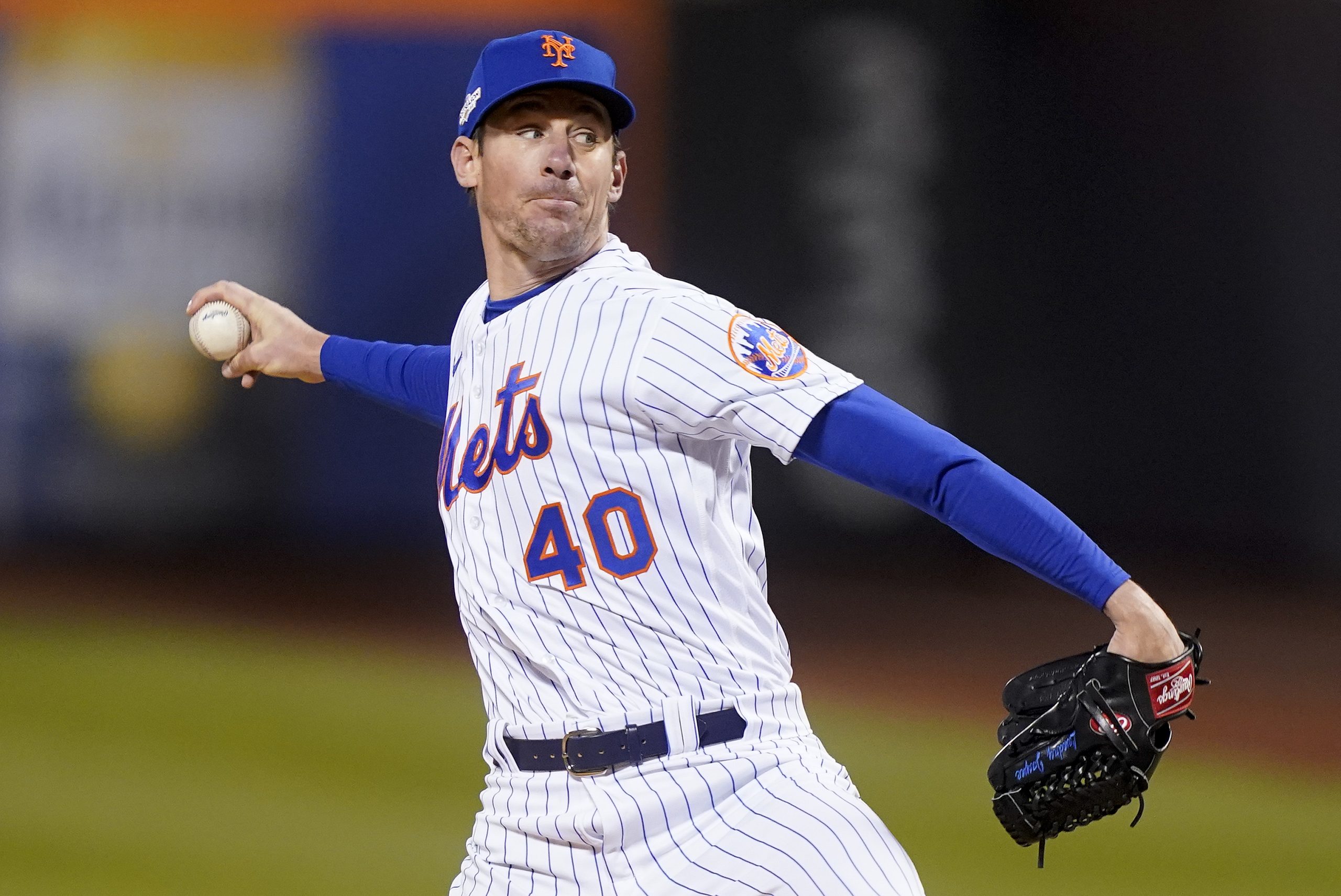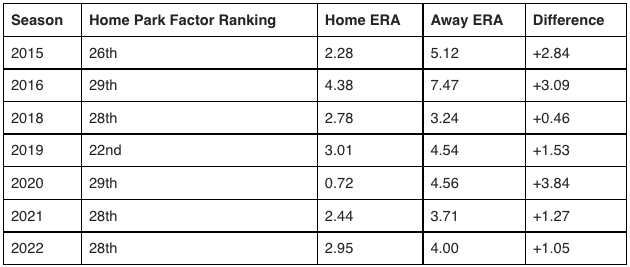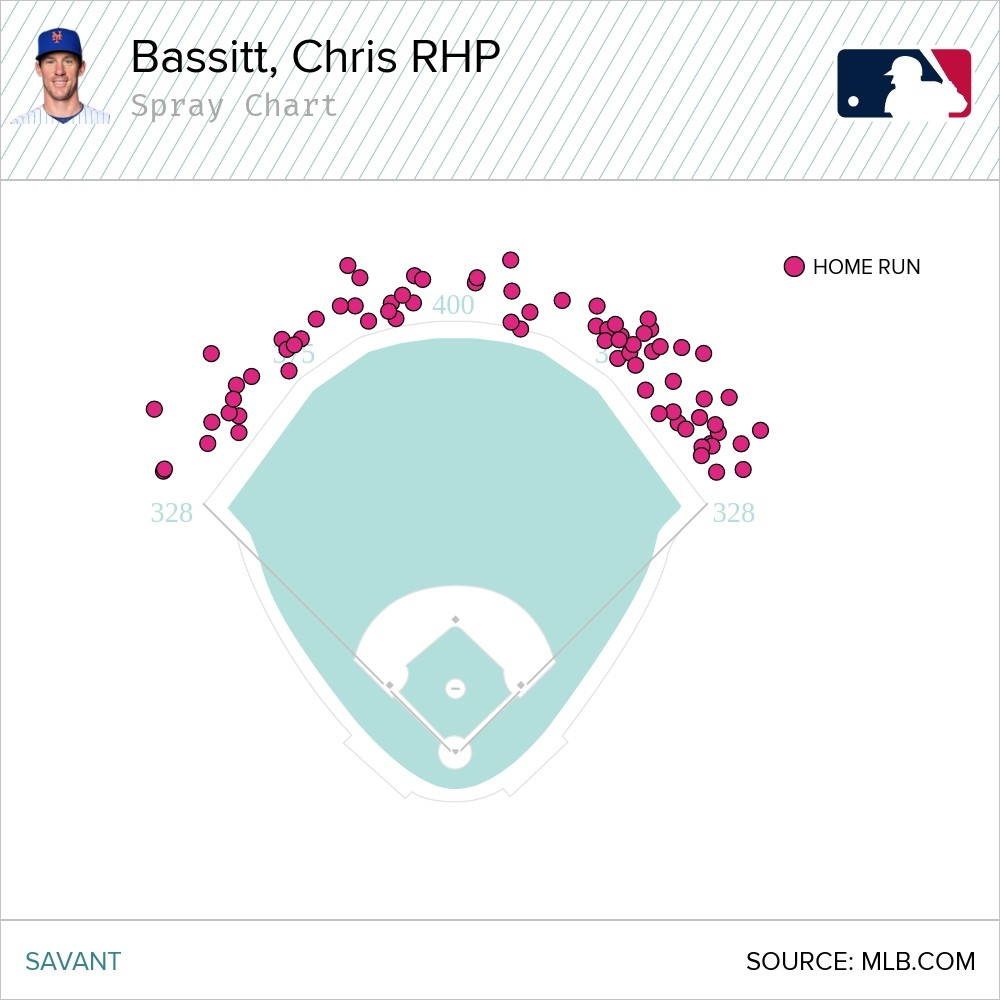
When the Toronto Blue Jays signed Chris Bassitt on Monday, the prevailing opinion was that he was a strong fit to solidify the middle of the team’s rotation.
The right-hander doesn’t throw triple-digit heat or miss bats by the boatload, but he’s been durable and effective in recent years. Since the beginning of the 2020 season, his 3.13 ERA ranks ninth among qualified pitchers, directly ahead of Kevin Gausman, Gerrit Cole and Dylan Cease.
For all his success there’s a question that Bassitt, like any pitcher coming to the Blue Jays, has to answer — and that’s whether he can hold up pitching in the gauntlet of the American League East.
Thrusting that doubt upon such an accomplished pitcher might seem a bit silly, but historically speaking this has been a tough team to pitch for. That’s a combination of a ballpark that’s generally favoured hitters and a division with teams that tend to assemble impressive lineups like the New York Yankees and Boston Red Sox.
To get a sense of the magnitude of that effect, I looked at starters the Blue Jays have acquired since 2000 that meet the following criteria:
- Played at least one season as a Blue Jay with 100+ innings pitched so their career ERA with Toronto is based on something substantial
- Was used as a starter (even if not 100% of the time) in at least two of the three previous seasons before acquisition to create a baseline of performance
- Pitched in a division that wasn’t the AL East most recently before coming to Toronto
That results in a 15-pitcher sample that looks like this:
*Batista’s ERA as a starter listed as he converted to full-time relief for the Blue Jays in 2005.
More often than not, starters come to the Blue Jays and underperform their recent standards, although the last couple of years have bucked that trend with Ray, Matz and Gausman thriving.
Before that, the pattern was nearly universal with Happ representing a hard-to-categorize exception because his Blue Jays ERA comes from multiple stints while his baseline is derived from his work before he was acquired the first time.
All of that is to say that it’s fair to expect Bassitt’s ERA to climb slightly based on history, but if it went up 28 points from his three-year average to 3.41 in 2023 the Blue Jays would be happy with that.
However, it’s worth asking if Bassitt is especially susceptible to a tough adjustment. As Arden Zwelling pointed out in his breakdown on Bassitt following the signing, the right-hander has extreme home/road splits in his career.
In some cases that’s a product of comfortability with a certain mound or routine, but for the veteran a more likely cause is the fact he’s plied his trade in difficult ballparks for hitters.
Here’s a breakdown of his home and road ERAs since he was picked up by the Oakland Athletics prior to the 2015 season — and where his home ballpark ranked for hitters according to Statcast’s Park Factor.
While ERA has its flaws, it’s a good stat to use with Bassitt, a soft contact artist whose FIP has been 36 points higher than his ERA over the course of his career.
The pattern here is as clear as it gets, but it’s not entirely based on forgiving ballpark dimensions. For instance, Bassitt’s K% and BB% are both better at home over the course of this career, and that’s not directly explainable by wall placements.
One thing that is more easily chalked up to pitcher-friendly environments is his career HR/9 at home (0.60) compared to on the road (1.25). This is a tough thing to project forward in Toronto with renovations ongoing at Rogers Centre, but there are a couple of images that can help tell this story.
Here is every regular season home run Bassitt has allowed in his MLB career, put against Rogers Centre’s current dimensions:
Perhaps two or three these round trippers would have stayed in the yard in Toronto, but the vast, vast majority would’ve been gone. That’s what you’d expect, if Bassitt has allowed his homers in mainly big ballparks it stands to reason they’d fly out of Rogers Centre.
Now, here are the flyouts Bassitt has conceded of at least 328 feet — the distance of the shortest walls in Toronto:
A significant number of these balls are going out at Rogers Centre, as you can see.
The question of whether Bassitt can thrive in the AL East is a little more open than you might think based on his track record alone.
That said, he’ll be helped by a more balanced schedule and it’s not fair to conceptualize his impressive career as just the product of favourable circumstances. His career ERA+ (118), which takes ballpark into account, matches Lance Lynn, Adam Wainwright, and even Tom Glavine.
Bassitt’s middling strikeout rates result in plenty of balls in play, which means the park he calls home may be disproportionately important to his success. Moving to Toronto is likely to hurt his production, but it’s the magnitude that matters.
If the Blue Jays could be sure he’d post a 3.13 ERA over the next three years he’d cost way more than $60 million. The success of his contract will be determined by whether any drop off is slight or rough. How many home runs he allows is likely to tell that tale.










